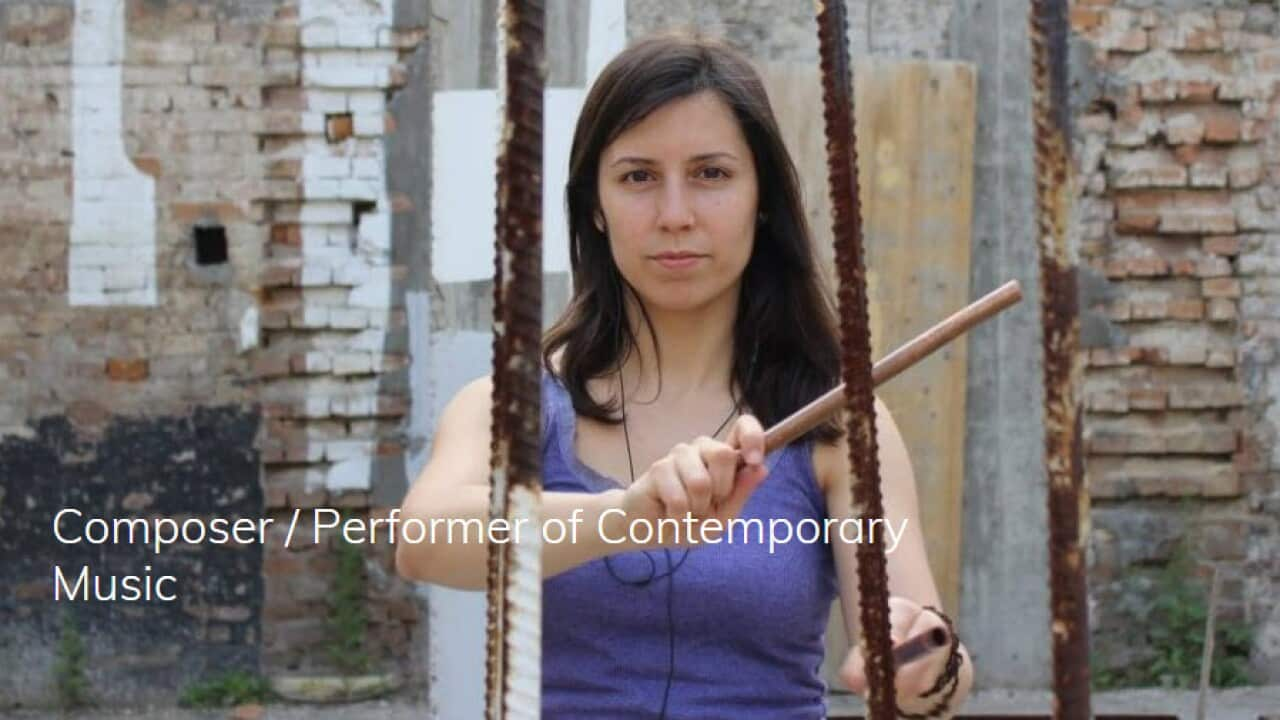Maja Bosnić, founder of artistic organisation "Zabuna", says there is a good reason why her organisation's name roughly translates to "confused" in English.
"Audience members often don't know how to react," she laughs,"Our first projects were all about interactive stage installations that were called "Zabuna na sceni" or " Commotion on the stage". Their aim was to break down barriers between audiences and performers through small concerts where audience participation was encouraged in a variety of ways. They played instruments or spoke to us, there was always a reaction and in some sort of way, a commotion. That confusing but exciting atmosphere is what lead us to the name "Zabuna".
Ms. Bosnić says that last week's performance of PHONES:ON is the organisations newest project that pushes the boundaries of what we know as musical performance.
"This is the first concert in the world to use smart phones as instruments, and the music is what we would refer to as contemporary music, or a contemporary genre. It was a mixture of premieres really, we had some debut compositions from Serbian composers, as well as the aspect of incorporating phones. In the last two pieces we got the audience involved, there were many new things happening."
The compositions part of PHONES:ON each incorporate technology in a different way. In one piece, musicians play a combination of their traditional instruments as well as various music applications available for download on smartphones. In another, audiences are asked to pick a song or audio clip of their choosing, put the volume to just 10%, and place the phone on the floor under their chairs. Through a series of different actions, musicians and audiences are guided to listen to the sounds in different ways.
Ms. Bosnić says the crowd reaction is often amusing to see.
"The reactions are surprising," says Ms. Bosnić, "for everyone in the room this type of performance is very new and foreign. You can see that many audience members don't know how to react, whether to relax and go with the flow, or to stop and observe. You can see some people really trying to process what is going on, which I think is a good thing. It shows that they're thinking in a different direction. Our concerts are not so much a musical experience as they are a performance, an artistic direction that uses music to express ideas. The whole point is that the experience forces you to re-evaluate perspectives and traditions, it forces you to reconsider how you interact with your immediate surrounding and possessions. And with art, and music."
Ms. Bosnić adds that for many audience members, PHONES:ON was their first exposure to contemporary art and music. The resulting confusion, or zabuna, she says, is normal.
"It's good for them!" says Ms. Bosnić, with a laugh. "It good because audiences in Serbia are getting a taste of a movement that is maybe more prominent internationally. In Serbia, however, we have composers and artists that are thinking conceptually and debuting their work here in world firsts. This concert is an example, it's the first of it's kind to incorporate technology and audiences in a musical setting. "
Ms. Bosnić says that she embraces criticism, but thinks contemporary music is in no way harming tradition.
"There are, of course, groups of people who don't believe in contemporary movements but I think that they don't cancel each other out. Traditional ways of playing music, of making art, aren't ruined, they're enhanced. Like in all art forms, many composers find adhering to strict guidelines very limiting. You wouldn't tell a famous painter to keep painting in colouring books their whole life."
Ms. Bosnić, who has a has a PhD in Music Composition and MA in Music Pedagogy, says that contemporary composers are working to preserve an image of modern society, the way it is now.
"In a way, composers soak up what is happening around them and produce an image, a musical image of the times we are living in. It's a living analysis of society, and our reactions to these performances are part of that image. It's provoking new emotions and new ideas from us, something that we will turn around and pay attention to."
In the meantime, Organisation Zabuna has its sights set on the world. Ms. Bosnić says that the next step is for their projects to start touring globally.
'We're hoping that the PHONES:ON project will be part of an international tour. We want to keep exploring technology and ways we can combine all these aspects in a concert. We hope to really bring Serbian creativity, and our work in contemporary art and performance, to the whole world."
